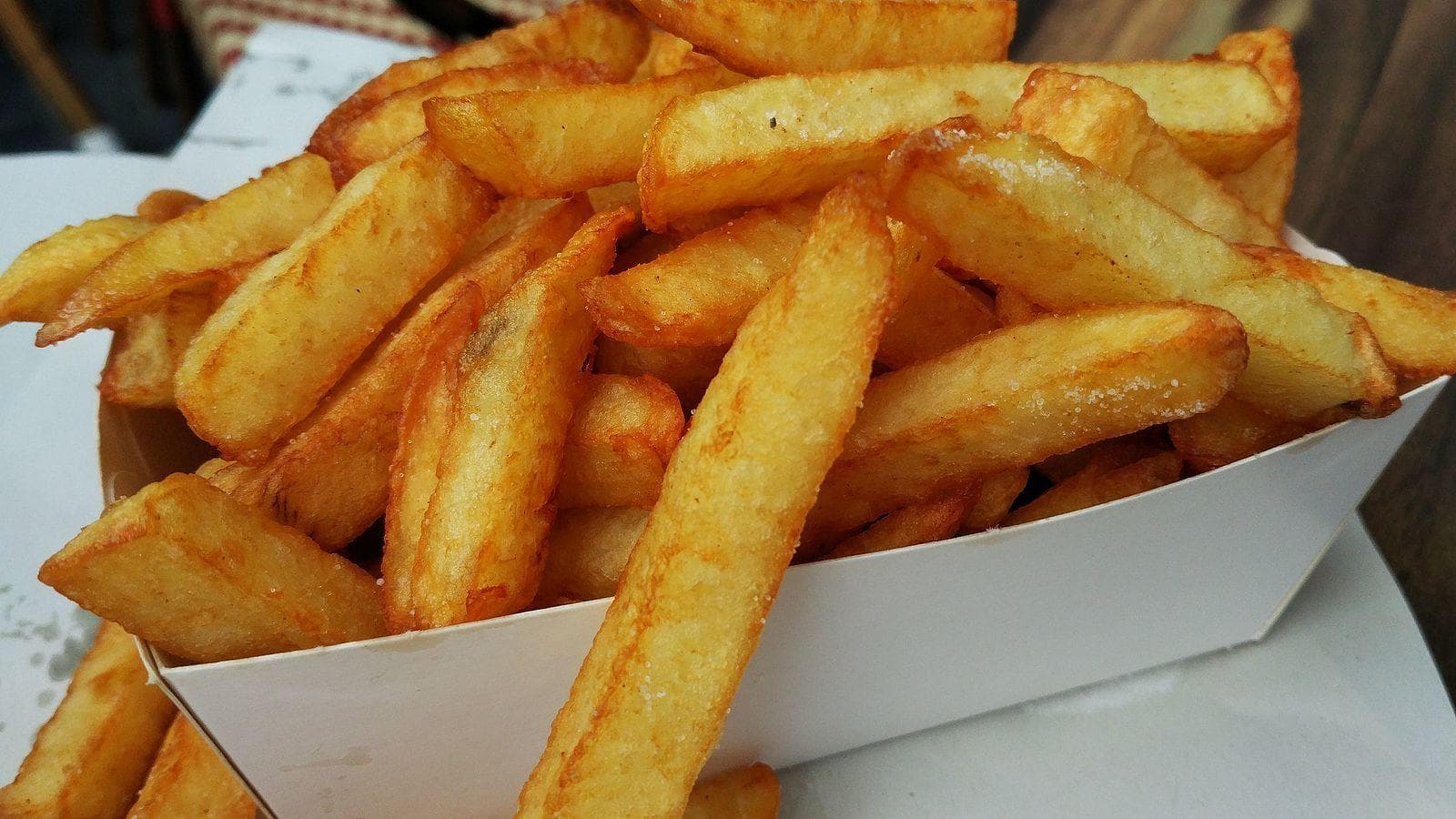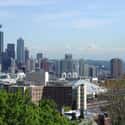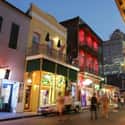-
(#6) Seattle
- Washington, USA
Cause of the food desert: As is the case with many food deserts, certain neighborhoods are hit harder, usually due to an inability to support large grocery stores. In some Seattle neighborhoods, convenience stores are more common than grocery stores. In addition to this, there often isn't adequate public transportation in these areas, making it difficult for residents without cars to access quality food.
Size of the population affected: There has not been a lot of recent research on food deserts in Seattle but, in 2011, the U.S. Department of Agriculture determined that there were 125,000 residents across 17 areas in and around the city lived in food deserts. The University of Washington performed a 2012 study and found that only 3% of the "vulnerable populations" throughout King County could walk to an affordable supermarket.
The effects: One out of five adults in King County is obese. High school and middle school students in King County have high rates of obesity as well, with one in 10 students in 8th, 10th, and 12th grades being obese.
Efforts to improve: There have been measures taken to widen access to affordable healthy food throughout the city. One idea has been to build small, local stores by a company called Stockbox Grocers. The startup was founded by two female entrepreneurs who came up with the idea to bring food directly to the people of Seattle most affected by the dearth of supermarkets. They built their prototype small food store in 2011 by remodeling a 160 square foot shipping container. In 2018, the company had one opened store in Seattle's First Hill neighborhood. It is a 2,000 square foot grocery store stocked with fresh food staples.
-
(#2) Atlanta
- Georgia, USA
Cause of the food desert: Starting in the late 1990s, smaller grocery store chains that dominated the market in Georgia began to lose business when chains like Walmart and Publix moved in. These establishments offered lower prices and bigger selections. Big retailers drove many of the smaller grocery stores in poorer neighborhoods out of business and ultimately those residents out of local healthy options.
Size of the population affected: As research shifts to studying causes over size, statistics are usually from 2015 to 2016, but still give some sense of the size of the desert A 2015 investigation performed by the Atlanta Journal Constitution determined that almost 2 million Georgia residents (about 500,000 children) reside in what can be classified as a food desert. In 2016, a study revealed a total of 35 food deserts in and around the city of Atlanta.
The effects: Fast food restaurants took the place of grocery stores in poor neighborhoods. Joints like McDonalds became the standard meal replacement for urban residents who had issues with getting to a grocery store out of walking distance. Without the option for affordable healthy food, Georgian residents are more likely to be severely overweight. Obesity rates rose from 30.7% to 31.4% between 2016 and 2017 and deaths from obesity-related conditions like cardiovascular disease were also on the rise.
Efforts to improve: It's not enough to simply add a grocery store to these food deserts as people have to learn how to eat healthy. There have been several initiatives to change the way the people of Atlanta think about food. In the late 1990s, there was a community garden movement that resulted in 300 community gardens all around the city area. Many residents learned how to grow their own vegetables and fruit.
Another solution was to bring in nonprofit organizations that provided Georgians with fresh food at fair prices. These nonprofits aimed to try to make healthy food available to everyone in the state. Additionally, local grocery stores began offering more organic products.
-
(#5) San Francisco
- San Francisco Bay Area, California, USA
Cause of the food desert: Big food retailers go for profits and these urban areas in and around San Francisco do not bring in the same dollars as the suburbs.
Size of the population affected: Recent data on San Francisco food deserts have been somewhat sparse and unreliable. In 2013, however, it was estimated that over 125,000 people living in the Bay Area reside in food deserts. In 2011, in the Bay Area urban town of Hunters Point, 40,000 residents had to travel several miles to the nearest major food store. However, the area is rich with fast food restaurants.
Effects: Despite the abundance of food deserts, obesity rates in San Francisco remain low, residents often have to make difficult choices about purchasing food. According to the previously mentioned 2013 study, about 20% of the area's residents have to skip purchasing food all together if they want to pay their bills, likely due to the notoriously high cost of living in San Francisco.
Efforts to improve: There have been several efforts made to assist residents who live in Bay Area food deserts. Two of the hardest hit areas of San Francisco include the Bayview and Hunters Point neighborhoods. The organization HealthyRetailSF donates between $15,000 and $20,000 to several local stores in an effort to make more shelf space for healthy food options. The money also helped to stock local corner shops with fresh food. Local accessible stores that used to sell just the routine fare like candy and junk food are now being stocked with fruits and vegetables.
In 2002, a couple of determined citizens started the Quesada Gardens Initiative in the Bayview area. They planted vegetables and flowers wherever they could, allowing community gardens and and naturally grown plants to feed citizens. The project is ongoing today.
-
(#3) Detroit
- Michigan, USA
Cause of the food desert: There is a serious lack of public transportation options in Detroit, making it difficult to travel out of your way to access a grocery store if you don't have a car. While Detroit's economy has seen some improvement in recent years, poverty rates are still high. This makes it difficult to support large scale grocery stores throughout the city.
Size of the population affected: In 2018, the Michigan Department of Agriculture reported that there were 19 neighborhoods in the city of Detroit that could be classified as a food desert. In addition to this, a 2017 study found over 30,000 residents have no access to a full-line grocery store.
The effects: Obesity rates in Detroit are higher than average, with 30.8% of adults in the city being obese. Low-income individuals, those most likely to live in food deserts, are most likely to be overweight. Diabetes rates are also rising in the city.
Efforts to improve: Detroit has become a hot spot for dining options, so much so that some even think that the label of food desert should be dropped.
The city has seen a large increase in planting farms in urban neighborhoods. Several successful city farm programs such as Michigan Farming Initiative and Keep Growing Detroit and Detroit Black Community have given lower income residents the availability of fresh food at affordable prices.
There are also a plethora of food assistance programs available for qualified residents of Detroit. Many of these programs have been set up to help the people who need them. Additionally, the reported number of grocery stores in 2017 was between 77 and 155. Although the city may not have any huge chain stores, there are currently several smaller food stores thriving in urban areas, which could help reduce the number of food deserts in coming years.
-
(#8) New Orleans
- Louisiana, USA
Cause of the food desert: Hurricane Katrina continues to devastate the city of New Orleans, especially the area's poorest residents. Prior to Katrina in 2009, there were 30 grocery stores in New Orleans. By 2011, there were only 20. The dramatic drop off is not only a loss of accessible healthy food, but it also means less local jobs.
Size of the population affected: In 2017, nearly 50,000 New Orleans residents did not have a single supermarket in their neighborhood. There are only 20 supermarkets for 350,000 residents in the New Orleans area. Depending on the neighborhood, some residents have to drive over one mile for fresh food.
Effects: Obesity rates in New Orleans, and Louisiana in general, are high. In addition to this, the state has generally high rates of diabetes.
Efforts to improve: In 2017, New Orleans mayor Mitch Landrieu put forth a $14 million Fresh Food Retail Initiative that provided supermarkets financial perks for setting up a retail outlet in neighborhoods that lacked a grocery store.
Convenience stores and gas stations in the area have also made meat and fresh food available to buy. Those retailers cannot offer the same low prices as a major supermarket but at least it's available. Additionally, public schools must make fresh fruit and vegetables available for students.
-
(#9) Minneapolis
- Minnesota, USA
Cause of the food desert: The Twin Cities fell victim to many of the common causes of food deserts. Urban areas mean tougher zoning laws and more expensive rent.
Size of the population affected: Recent statistics on the Twin Cities specifically are sparse, but studies done in 2016 indicate Minnesota in general has major issues with food deserts. A 2016 study indicated nearly a third of the population lives in a food desert. In 2006, it was estimated that almost one third of the population of St. Paul and nearly one half of Minneapolis citizens lived in food deserts, so it's likely a lot of deserts exist within these cities.
The effects: Minnesota's obesity rate increased in 2016, going from 2015's 26.1% to 27.8%.
Efforts to improve: In the early 2000s, farmers markets began popping up in Twin City food desert locales along with public assistance programs to make those markets affordable for the poor.
In 2009, an estimated 36 percent of small local stores had little to no fresh produce. To combat this lack of healthy food, in 2010, Minneapolis started the Healthy Corner Store Program. The initiative helped to make fresh fruit and vegetables available at local convenience stores and has seen some success. In 2013, corner stores that took part in the program raised their percentage of produce sales by 155 percent and continue to see a consumer demand for fresh healthy food.
New Random Displays Display All By Ranking
About This Tool
Imagine this: you cannot buy groceries in local supermarkets, but are forced to choose fast food or buy frozen food at a convenience store. Welcome to life in the food desert. No one likes having dinner at a gas station or convenience store, but this has become daily life for many people in some cities in the United States. Perhaps it is due to the high prices of fresh produce, or your area is without delicious food.
Many of us are lucky enough to drive to the nearest supermarket and buy fresh and healthy foods, it is tragic if you live in the food desert. The random tool lists 10 of the largest food desert in the US you may never realize.
Our data comes from Ranker, If you want to participate in the ranking of items displayed on this page, please click here.
















